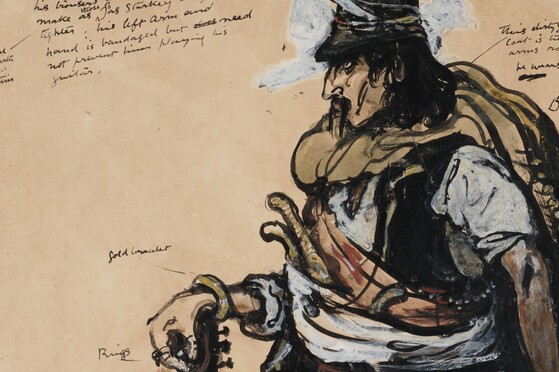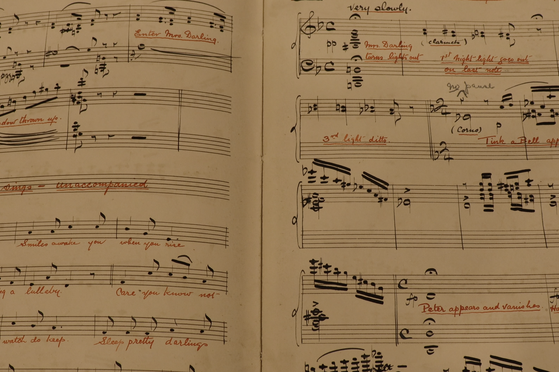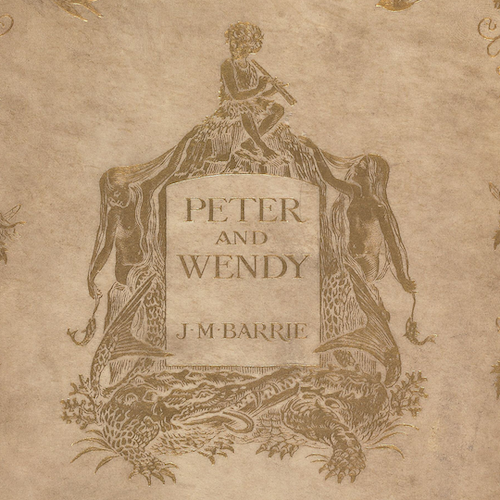
Within the J.M. Barrie collection, one might find ornate prints of Peter Pan, or The Boy Who Would Not Grow Up, production scores and costume designs, and a wide range of correspondence–including the odd letter written to Barrie from a cookie company intending to print Peter Pan quotes on children’s biscuits.
The life of J.M. Barrie, British author and playwright most known for Peter Pan, or The Boy Who Would Not Grow Up, is documented in his eponymous collection at the Beinecke Rare Book and Manuscript Library. The collection supplements the only remaining copy of the The Boy Castaways of Black Lake Island, a tale published by Barrie yet written by Peter Llewelyn Davies, one of the Llewelyn Davies children who inspired the adult novel The Little White Bird (the novel, which, would evolve into the play Peter Pan).
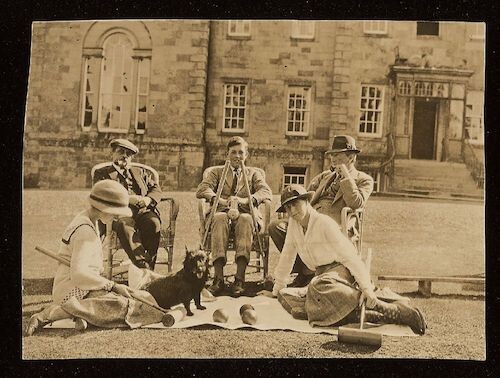
In 1897, Barrie met the Llewelyn Davies children in Kensington Garden with his St. Bernard dog. He amused them with funny ear wiggling and fantastic tales about a boy named Peter Pan who lived with fairies in the Gardens. Becoming a close friend of the Llewelyn Davies family (known affectionately as “Uncle Jim”), Barrie dedicated other continuations of Peter Pan” To Sylvia and Arthur Llewellyn Davies and their boys (my boys).”
While Barrie wrote prolifically, covering both theatre and fiction, this blog post will highlight some of the notable pieces related to the Peter Pan universe in the J.M. Barrie Collection.
The play, Peter Pan or The Boy Who Would Not Grow Up, evolved into the novel Peter and Wendy—a name which Barrie popularized. Barrie gave the rights to Peter Pan to Great Ormond Street Hospital for Children in London, and in 1939, Disney acquired the animation rights to the play.
Highlight #1: William Nicholson’s Costume Designs
In December of 1904, Peter Pan, or The Boy Who Would Not Grow Up debuted at the Duke of York’s Theatre in London. Hailed a success, the play traveled across the pond and in 1905, opened in New York. Artist William Nicholson designed the costumes for the 1904 debut, and when requested at the Beinecke, these beautiful drawings arrive in an oversized green, fabric wrapped box. Outlined in white, the character sketch of Peter Pan includes scribbles noting how fabrics might reflect stage lights and blacked out notes indicating changes in the artist’s vision.
In the original sketches, we see a variety of characters–from mysterious pirates to racialized Indigenous characters. While we may romanticize the fun nature of Peter Pan, and the tale’s allure of mischievous youth, there is room for criticism. Barrie’s portrayal of Indigenous peoples through the lens of adventure and villinay succumbs to racist production tropes still relevant to today’s appropriation of Indigenous culture and ceremonial dress. The beauty of William Nicholson’s illustrations must also be read through this critical lens and would be of interest to researchers covering the evolution of costume design.
Researchers will also be interested in the sketches of British artist Frank Gillett, who portrayed characters from the 1905 production of the play starring Cecilia Loftus as Peter Pan and Hilda Trevelyan as Wendy.
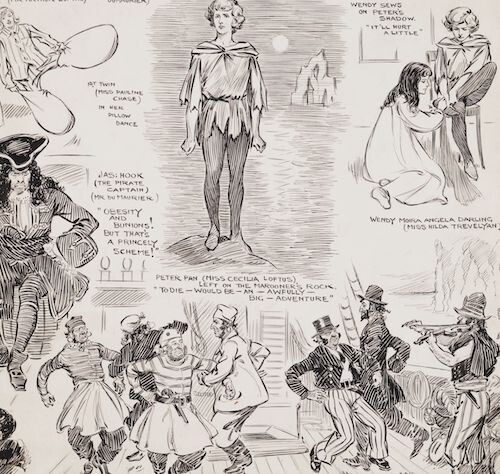
Highlight #2: “An Afterthought”
In 1909, J.M. Barrie unveiled “An Afterthought,” a short epilogue to Peter Pan. “An Afterthought” was performed at the Duke of York’s Theatre Stage Door during Christmas, and was only performed once as a surprise for Barrie’s manager Charles Frohman. Originally gifted to the actress who played Wendy in 1909, the Beinecke now holds the original written manuscript in Barrie’s messy hand. In the epilogue, Peter Pan visits Wendy years after their initial adventures in Neverland, but now she has grown up and has her own family. Wendy has lost her ability to fly (an ability only reserved for children) and confronts Peter with her age. At the end of the dialogue, her daughter, Jane, embarks on a new adventure with Peter Pan.

Highlight #3: Musical Scores
The J.M. Barrie Collection contains two musical scores from the play—one with detailed notation of stage directions and the other without. The score with stage notations broadens our understanding of the play’s props, set up, and lighting. Notations are written in orange pen and includes cues like: “As Hook puts his head through hole in door” and “3rd light ditto…Tink a Bell appears and darts about.” The complete score to Peter Pan was composed by John Crook and Gustav Saeuger.

Highlight #4: Disney Animation Cell
In the original play, Peter Pan was not only a mischievous and aloof character, but flirted between the role of protagonist and villain. Anthony Lane writes of the emerging sadism of the Lost Boys in the play and the true nature of the original character of Peter Pan:
In truth, he is mean and green, a mini-monster of capering egotism; could there be any more dazzling proof of self-regard than a boy who first shows up in pursuit of his own shadow?
When initially received, the play was considered a children’s tale yet, as described by critic George Bernard Shaw, it is truly a play for grown ups. Read for deep societal critiques of the Victorian middle class, the story’s tone was initially morally ambiguous.
The Disney adaption of the play softens the darker aspects of Peter’s character, who is modeled on the Greek god Pan, purveyor of the wild and shepherds. When one takes a closer look at this Disney cell, one can see that the characters are not painted with the background, but are composed of thin plastic and overlaid.
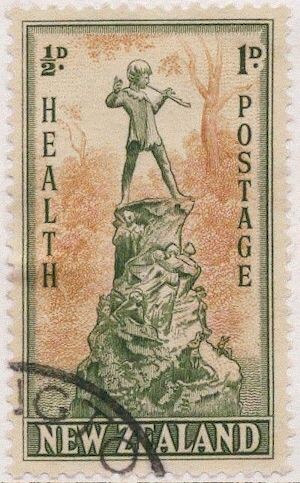
Highlight #5: Peter Pan Ephemera
In addition to artistic renderings of Peter Pan, the J.M. Barrie Collection includes a variety of Peter Pan ephemera—from post stamps to stage bills printed on satin. Originally from New Zealand, this health postage stamp exemplifies the popularity of the play abroad. Health postage stamps are a long running series of charity stamps in New Zealand that charge an additional fee for charity.
J.M. Barrie’s tale of Peter Pan has captured the imagination of audiences across the globe. Within Beinecke’s collection, these highlights are a starting point to explore the complexities of J.M. Barrie as a person and author. Other works by Barrie include Quality Street (1901), The Admirable Crichton (1902), The Little White Bird (1902), and Dear Brutus (1917), among others. What inspires, challenges, or awes you in the collection?
To further explore the collection, view material under these call numbers:
J.M. Barrie Collection
GEN MSS 1400
J.M. Barrie’s Boy Castaways
Ip B276 B64
Llewelyn Davies Family Papers
GEN MSS 554
